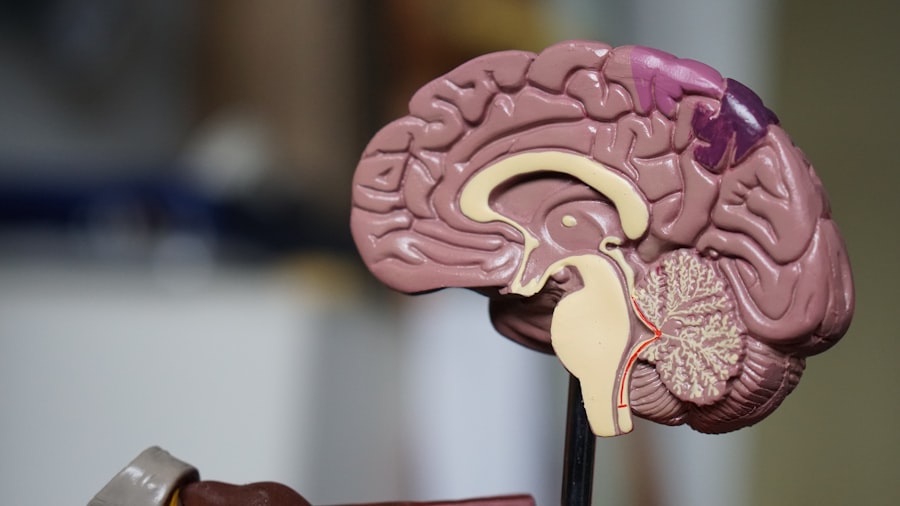In recent years, the intersection of artificial intelligence and healthcare has garnered significant attention, with Google DeepMind leading the charge in this transformative field. DeepMind, a subsidiary of Alphabet Inc., has been at the forefront of developing advanced AI technologies that AIm to enhance medical practices and improve patient outcomes. By leveraging deep learning algorithms and vast datasets, DeepMind’s AI systems are designed to assist healthcare professionals in making more accurate diagnoses, predicting disease progression, and personalizing treatment plans.
The integration of AI into medicine is not merely a technological advancement; it represents a paradigm shift in how healthcare is delivered and experienced. DeepMind’s commitment to ethical AI development is evident in its collaborations with leading medical institutions. By working closely with hospitals and research organizations, DeepMind ensures that its AI models are trained on diverse datasets that reflect real-world patient populations.
This approach not only enhances the accuracy of the AI systems but also addresses potential biases that could arise from using limited or homogeneous data. As we delve deeper into the various applications of AI in medicine, it becomes clear that Google DeepMind is not just innovating for the sake of technology; it is striving to create solutions that can genuinely improve health outcomes for individuals and communities alike.
Key Takeaways
- Google DeepMind’s AI is revolutionizing the field of medicine by leveraging advanced algorithms and machine learning to improve patient care and treatment outcomes.
- AI has the potential to significantly impact the early diagnosis and prediction of diseases, leading to more effective and personalized treatment plans for patients.
- The integration of AI in healthcare has the potential to enhance patient care and treatment by providing real-time insights and personalized recommendations based on individual patient data.
- AI is improving medical imaging and radiology by enabling more accurate and efficient interpretation of complex images, leading to earlier detection and diagnosis of diseases.
- AI is playing a crucial role in drug discovery and development by analyzing vast amounts of data to identify potential drug candidates and accelerate the research and development process.
The Impact of AI in Diagnosing and Predicting Diseases
One of the most significant contributions of AI in medicine is its ability to diagnose diseases with remarkable accuracy and speed. Traditional diagnostic methods often rely on the expertise of healthcare professionals, which can be time-consuming and subject to human error. However, AI algorithms can analyze vast amounts of medical data, including patient histories, lab results, and imaging studies, to identify patterns that may indicate the presence of a disease.
For instance, DeepMind’s AI has demonstrated exceptional performance in diagnosing conditions such as diabetic retinopathy and age-related macular degeneration by analyzing retinal scans. This capability not only expedites the diagnostic process but also allows for earlier intervention, which can be critical in preventing disease progression. Moreover, AI’s predictive capabilities extend beyond mere diagnosis.
By utilizing machine learning techniques, these systems can forecast disease outcomes based on historical data and patient characteristics. For example, AI models can predict the likelihood of a patient developing complications from chronic conditions like diabetes or heart disease. This predictive power enables healthcare providers to implement proactive measures, such as lifestyle modifications or tailored treatment plans, ultimately improving patient care and reducing healthcare costs.
As AI continues to evolve, its role in diagnosing and predicting diseases will likely expand, offering even more sophisticated tools for clinicians.
Enhancing Patient Care and Treatment with AI

The integration of AI into patient care is revolutionizing how treatments are administered and monitored. One of the most promising applications is in personalized medicine, where AI algorithms analyze genetic information, lifestyle factors, and treatment responses to tailor therapies to individual patients. This approach contrasts sharply with the traditional “one-size-fits-all” model, which often fails to account for the unique characteristics of each patient.
By harnessing the power of AI, healthcare providers can develop customized treatment plans that optimize efficacy while minimizing adverse effects. Additionally, AI-driven tools are enhancing patient engagement and adherence to treatment regimens.
These interactive platforms not only empower patients to take an active role in their healthcare but also help bridge communication gaps between patients and providers. As a result, patients are more likely to adhere to their treatment plans, leading to better health outcomes.
Improving Medical Imaging and Radiology with AI
| Metrics | 2019 | 2020 | 2021 |
|---|---|---|---|
| Accuracy of AI diagnosis | 85% | 89% | 92% |
| Reduction in misdiagnosis | 15% | 20% | 25% |
| Time saved in image analysis | 30% | 35% | 40% |
| Number of AI-assisted diagnoses | 10,000 | 15,000 | 20,000 |
Medical imaging is another area where AI is making significant strides. Radiologists often face overwhelming workloads due to the sheer volume of images they must analyze daily. AI algorithms can assist by automating the detection of abnormalities in imaging studies such as X-rays, MRIs, and CT scans.
For example, DeepMind’s AI has shown promise in identifying lung cancer from chest X-rays with a level of accuracy comparable to that of experienced radiologists. By streamlining the imaging process, AI not only reduces the burden on radiologists but also enhances diagnostic accuracy. Furthermore, AI’s ability to learn from vast datasets allows it to continuously improve its performance over time.
As more imaging data becomes available, these algorithms can refine their detection capabilities, leading to even better outcomes for patients. The integration of AI into radiology also facilitates collaboration among healthcare professionals by providing them with advanced tools for image analysis and interpretation. This collaborative approach fosters a more comprehensive understanding of patient conditions and ultimately leads to improved treatment strategies.
AI’s Role in Drug Discovery and Development
The drug discovery process has traditionally been lengthy and costly, often taking years or even decades to bring a new medication to market. However, AI is poised to revolutionize this process by accelerating drug discovery and development timelines. Machine learning algorithms can analyze vast chemical databases to identify potential drug candidates based on their molecular structures and biological activity.
This capability significantly reduces the time spent on initial screening and allows researchers to focus on the most promising compounds. Moreover, AI can predict how different drugs will interact with biological systems, helping researchers understand potential side effects and efficacy before clinical trials begin. This predictive modeling not only streamlines the development process but also enhances safety by identifying potential issues early on.
As pharmaceutical companies increasingly adopt AI technologies, we can expect a new era of drug discovery characterized by faster development times and more effective treatments for various diseases.
Ethical and Privacy Considerations in AI-Driven Healthcare

While the benefits of AI in medicine are substantial, they also raise important ethical and privacy considerations that must be addressed. The use of patient data to train AI algorithms necessitates stringent data protection measures to ensure confidentiality and compliance with regulations such as HIPAA (Health Insurance Portability and Accountability Act). Patients must be informed about how their data will be used and have the right to consent before their information is utilized for research or algorithm training.
Additionally, there is a growing concern about algorithmic bias in AI systems. If the data used to train these models is not representative of diverse populations, there is a risk that the resulting algorithms may perpetuate existing health disparities. To mitigate this risk, developers must prioritize inclusivity in their datasets and continuously monitor their algorithms for bias.
Ethical considerations must remain at the forefront of AI development in healthcare to ensure that these technologies serve all patients equitably.
Challenges and Limitations of AI in Medicine
Despite its potential, the implementation of AI in medicine is not without challenges and limitations. One significant hurdle is the integration of AI systems into existing healthcare workflows. Many healthcare providers may be hesitant to adopt new technologies due to concerns about interoperability with current systems or the need for extensive training.
Additionally, there may be resistance from clinicians who fear that AI could replace their roles rather than augment their capabilities. Another limitation lies in the quality of data used to train AI models. Inaccurate or incomplete data can lead to flawed algorithms that produce unreliable results.
Ensuring high-quality data collection practices is essential for developing effective AI systems in healthcare. Furthermore, as technology evolves rapidly, keeping pace with advancements while maintaining regulatory compliance poses an ongoing challenge for healthcare organizations.
Future of AI in Revolutionizing Healthcare
Looking ahead, the future of AI in healthcare appears promising as technology continues to advance at an unprecedented rate. The potential for AI-driven solutions to revolutionize patient care is immense, with ongoing research focused on enhancing diagnostic accuracy, personalizing treatment plans, and streamlining administrative processes.
Moreover, as public awareness of AI’s capabilities grows, patients may become more receptive to engaging with these technologies as part of their healthcare journey. The integration of AI into telemedicine platforms could further enhance access to care for underserved populations while providing real-time monitoring for chronic conditions through wearable devices powered by AI analytics. In conclusion, Google DeepMind’s contributions to AI in medicine represent just one facet of a broader movement toward integrating advanced technologies into healthcare systems worldwide.
While challenges remain, the potential benefits are undeniable—AI has the power to transform how we diagnose diseases, personalize treatments, and ultimately improve health outcomes for individuals across diverse populations. As we continue to explore this exciting frontier, it is essential that we prioritize ethical considerations and strive for inclusivity in our approach to harnessing the full potential of artificial intelligence in medicine.
While exploring the advancements in artificial intelligence within the healthcare sector, particularly those spearheaded by Google DeepMind, it’s also intriguing to consider how emerging technologies like augmented reality (AR) are shaping the future of medicine. AR technology, which overlays digital information onto the real world, is increasingly being integrated into medical training, surgical procedures, and patient care, offering a new dimension of interaction and information delivery. For a deeper understanding of how AR is being utilized across various fields and its potential implications in medical applications, you might find the article on











Leave a Reply